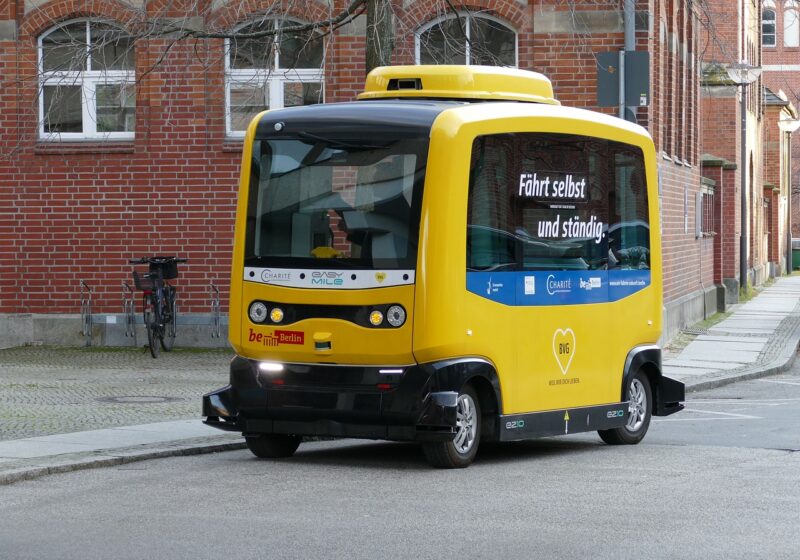How Autonomous Vehicles Could Transform Public Transport Worldwide
November 11, 2024

The advent of autonomous vehicles (AVs) promises to revolutionize not only personal transportation but also public transport systems across the globe. As cities grapple with congestion, pollution, and aging infrastructure, the integration of self-driving technology into public transit offers innovative solutions to these persistent challenges. In this article, we will explore how autonomous vehicles could transform public transport, the potential benefits and drawbacks, and the implications for urban planning and policy-making.
1. Understanding Autonomous Vehicles
Autonomous vehicles refer to cars, buses, and trucks capable of traveling without human intervention. These vehicles utilize various technologies, such as sensors, cameras, radar, and artificial intelligence, to navigate roads, detect obstacles, and make decisions in real-time. The levels of autonomy range from driver-assist systems that require human oversight to fully autonomous vehicles that operate independently.
Key technology features of autonomous vehicles include:
- LiDAR and Radar Technology: These systems map the environment around the vehicle, creating a 3D representation to help them navigate safely.
- Artificial Intelligence: AI algorithms process data from various sensors to predict and respond to dynamic road conditions.
- Connectivity: AVs can communicate with each other and with road infrastructure to improve efficiency and safety.
2. The Potential Benefits of Autonomous Public Transport
Integrating autonomous vehicles into public transport systems could provide various benefits, significantly enhancing urban mobility.
- Increased Efficiency: Autonomous vehicles can optimize routing and scheduling, leading to reduced wait times and more reliable services. As AVs collect and analyze real-time data, they can allocate resources dynamically based on demand, allowing for more flexible transport options.
- Cost Reductions: By reducing labor costs associated with drivers, municipalities could save money that can be reinvested in infrastructure and service improvements. Additionally, AVs can minimize operational costs through better fuel efficiency and decreased wear and tear on vehicles.
- Environmental Impact: Electric autonomous vehicles could significantly cut emissions associated with public transport, improving air quality in urban settings. As cities adopt greener transportation alternatives, the cumulative effect on public health could be profound.
- Accessibility: Autonomous public transport can cater to underserved communities, including the elderly, disabled, and those without access to personal vehicles. AVs can provide on-demand services in areas where traditional public transport is infrequent or non-existent.
3. Case Studies in Autonomous Public Transport
Several cities around the world are already testing and implementing autonomous vehicles in their public transport systems. Here are a few notable examples:
- Capital Metro, Austin: In partnership with local technology firms, Capital Metro is piloting autonomous shuttle services, offering a first-mile last-mile solution to bridge gaps between transit hubs and neighborhoods.
- Gothenburg, Sweden: The city has launched autonomous buses that ferry passengers along designated routes, providing insights into operational efficiencies and rider preferences.
- Los Angeles: A variety of pilot programs utilizing autonomous shuttles for last-mile connections are being tested to complement the city’s extensive metro system.
These real-world implementations are helping to identify potential challenges and develop best practices for future deployments of AVs in public transport.
4. Challenges to Overcome
Despite the promising potential of autonomous vehicles in public transport, several challenges need to be addressed:
- Regulatory Hurdles: Governments must develop clear regulations regarding the operation of AVs in public transport. This includes safety standards, liability issues, and data protection laws to secure user privacy.
- Public Perception: Overcoming public skepticism regarding the safety and reliability of autonomous systems is crucial. Continued education and transparent communication will help build trust among users.
- Infrastructure Needs: AVs require sophisticated infrastructure, such as dedicated lanes, smart traffic signals, and charging stations. Upgrading existing systems will require significant investment and planning.
5. The Future of Autonomous Public Transport
The future of public transport could be vastly different as autonomous vehicles become fully integrated into urban mobility systems. The adoption of AVs could lead to:
- Shared Mobility Services: The rise of ride-sharing platforms using AVs could facilitate a shift from car ownership to shared transportation models, reducing congestion and freeing up parking space in cities.
- Urban Redesign: With fewer personal vehicles on the road, cities might reimagine their urban landscapes, creating pedestrian-friendly areas, more green spaces, and improved public transport infrastructure.
- Data-Driven Decisions: The deployment of AVs will generate vast amounts of data, helping cities analyze travel patterns and optimize public transport strategies further.
As we envision this future, collaboration between policymakers, technology developers, public transit agencies, and the community will be essential for maximizing the potential benefits of autonomous vehicles in public transport.
Conclusion
The transformation of public transport through autonomous vehicles presents numerous opportunities for enhancing urban mobility. From improving efficiency and reducing costs to boosting accessibility and minimizing environmental impact, the potential benefits are significant. However, realizing this vision will require overcoming regulatory, infrastructure, and public perception challenges. By fostering a collaborative approach, cities can unveil a future where autonomous public transport systems deliver enhanced service and optimized urban living for all residents.
If cities rise to the challenge and embrace the opportunities presented by AV technology, public transport systems worldwide will unlock unprecedented efficiencies, accessibility, and sustainability.






